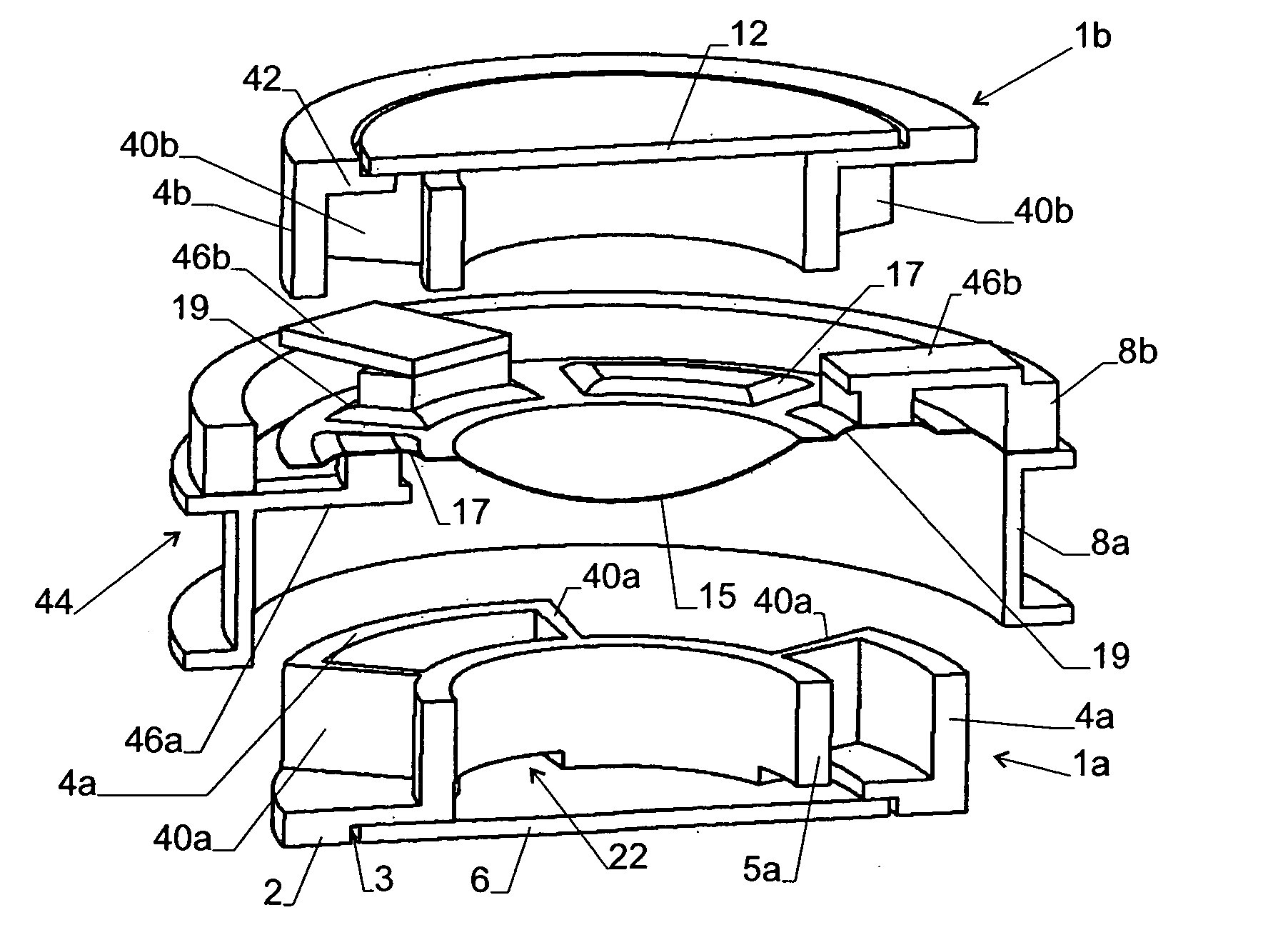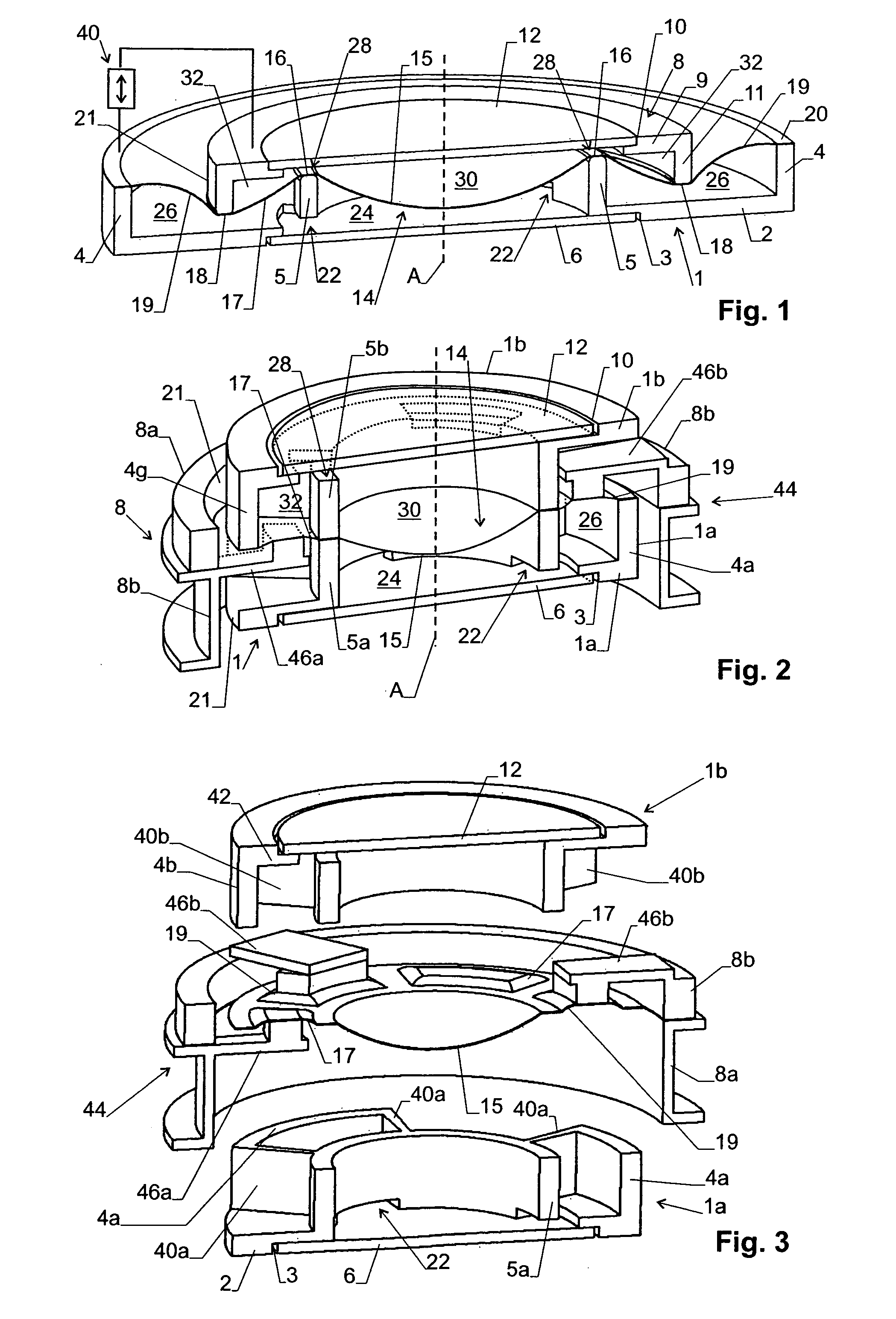Variable focus lens having two liquid chambers
a focus lens and liquid chamber technology, applied in the field of variable focus lenses, can solve the problems of difficult to remove residual air from the chambers, difficult manufacturing of this type of lens, etc., and achieve the effects of reducing gravitational effects, preventing wrinkles during actuation, and simplifying the manufacturing process
- Summary
- Abstract
- Description
- Claims
- Application Information
AI Technical Summary
Benefits of technology
Problems solved by technology
Method used
Image
Examples
first embodiment
[0025]The embodiment of a variable focus lens of FIG. 1 is of substantially rotational-symmetric design in respect to an optical axis A. It comprises a housing 1 having a radially extending bottom section 2 with a first circular opening 3, a cylindrical, axially extending outer wall 4 and a cylindrical, axially extending inner wall or holder 5. A transparent first window 6 is held in housing 1 and closes first circular opening 3.
[0026]The lens further comprises an actuator 8 having a radially extending top section 9 with a second circular opening 10 and a cylindrical, axially extending outer wall 11. A transparent second window 12 is held in actuator 8 and closes second circular opening 10. The transparent second window 12 and the top section 9 can also be made out of one material and be one single component.
[0027]A flexible, elastic foil 14 extends between housing 1 and actuator 8 and forms a plurality of membranes. These membranes include:[0028]A primary membrane 15 suspended in h...
second embodiment
[0055]A second embodiment is shown in FIGS. 2 and 3. In the following, only the differences with respect to the first embodiment are described.
[0056]In the first embodiment the first and second auxiliary membranes 19, 17 are not arranged in an annular layout with one membrane at a larger distance from axis A than the other. Rather, as shown in FIGS. 2 and 3, the first and second auxiliary membranes 19, 17 are arranged on a common annular region in alternating fashion when viewed in azimuthal direction. They are meeting at radial wall sections 40a, 40b of housing 1.
[0057]As can be seen, housing 1 has two-part form, with a first, bottom section 1a and a second, top section 1b rigidly connected to each other, with the foil forming the membranes arranged between them. Both sections 1a, 1b together form holder 5 by means of inner wall sections 5a, 5b. The radial sections 40a, 40b are extending radially away from inner wall sections 5a, 5b, respectively.
[0058]Each pair of two wall section...
PUM
| Property | Measurement | Unit |
|---|---|---|
| size | aaaaa | aaaaa |
| size | aaaaa | aaaaa |
| size | aaaaa | aaaaa |
Abstract
Description
Claims
Application Information
 Login to View More
Login to View More - Generate Ideas
- Intellectual Property
- Life Sciences
- Materials
- Tech Scout
- Unparalleled Data Quality
- Higher Quality Content
- 60% Fewer Hallucinations
Browse by: Latest US Patents, China's latest patents, Technical Efficacy Thesaurus, Application Domain, Technology Topic, Popular Technical Reports.
© 2025 PatSnap. All rights reserved.Legal|Privacy policy|Modern Slavery Act Transparency Statement|Sitemap|About US| Contact US: help@patsnap.com


